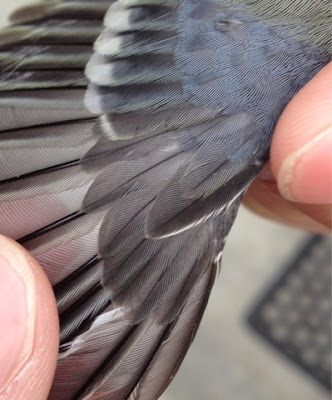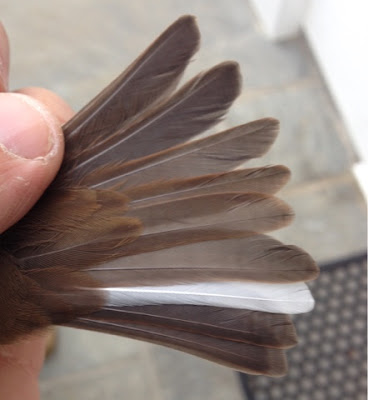Over yesterday and today, we handled 134 birds (123 new and 11 retrap) of which 81 were Meadow Pipits. Not too shabby for so early in the autumn, but there were lots of birds passing, but most chose to settle just outside and around the triangle! But it was a good chance for new recruits to get to grips with a nice species with a useful moult pattern.
 |
| If you're lucky, you can see the difference in shape of the primary coverts between this adult bird (top) and a first-year bird (bottom), with the latter being more pointed at the tip. |
The reedbed nets also produced a few late warblers (two Sedge, four Reed and five Cettis's, including one ringed as an adult in 2011), Stonechat and a smart Kingfisher. A single extra net also did us proud with a Garden Warbler (first ever caught at Gunwalloe) and two Firecrest (also the first caught here!).
We're not used to sharing the overflow car park at Gunwalloe with anyone, especially not at 6 in the morning, so it was a surprise to find it full of vans, lorries and 30+ cars. A quick chat with the security guards later and we found out this was in fact a day of filming for Poldark. We did invite the main man to grab his scythe and clear a new ride, but he declined...
















